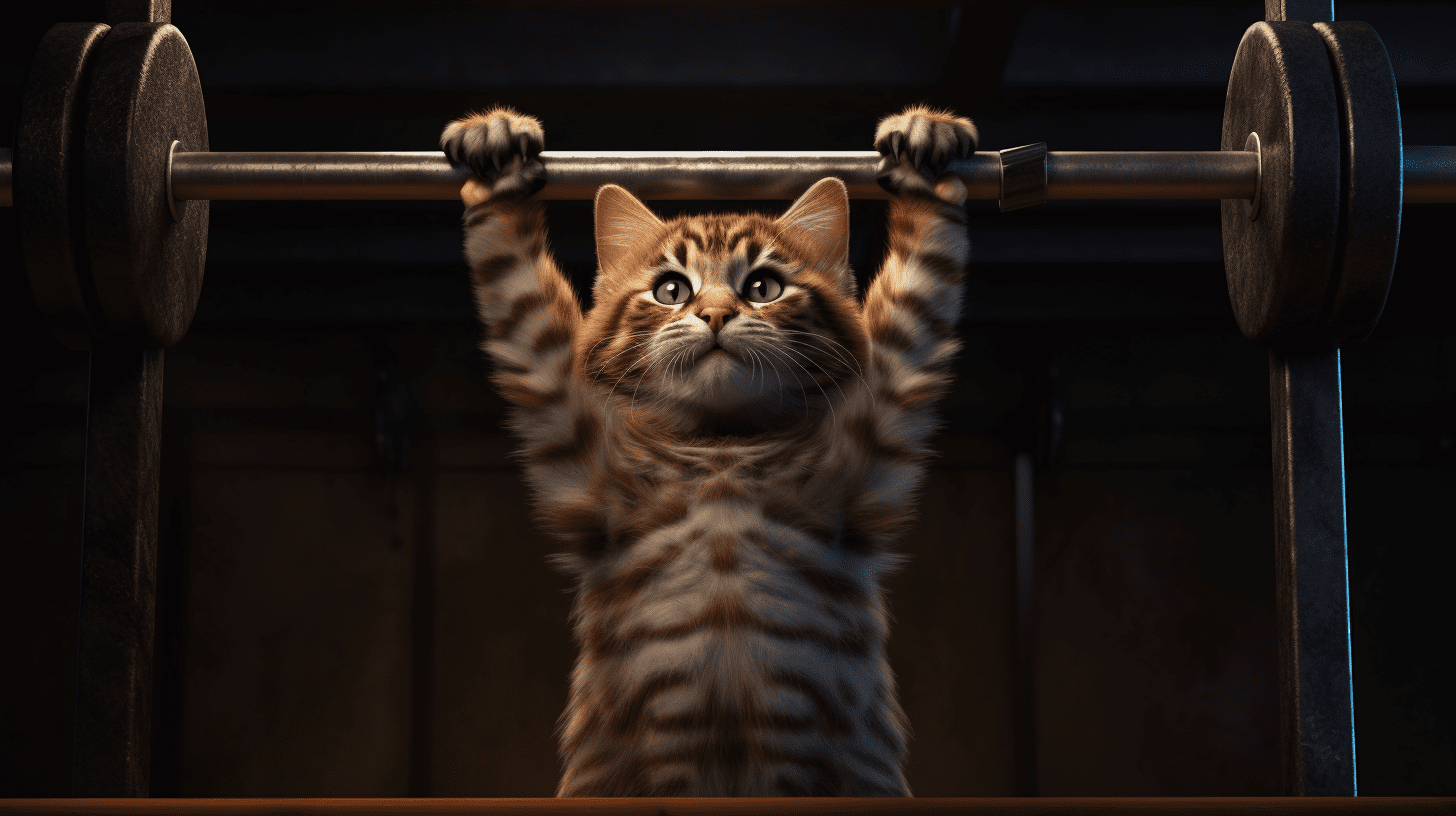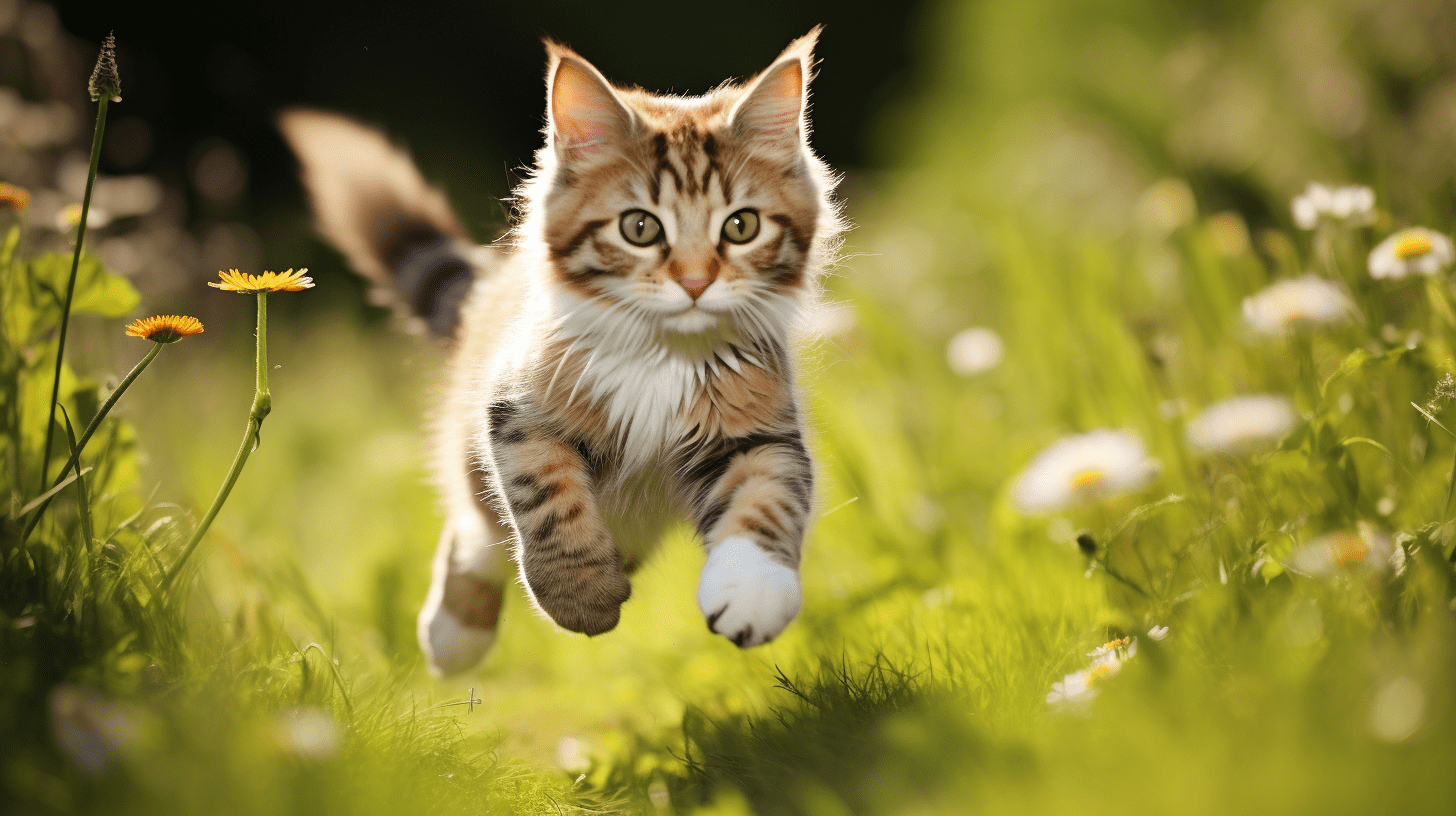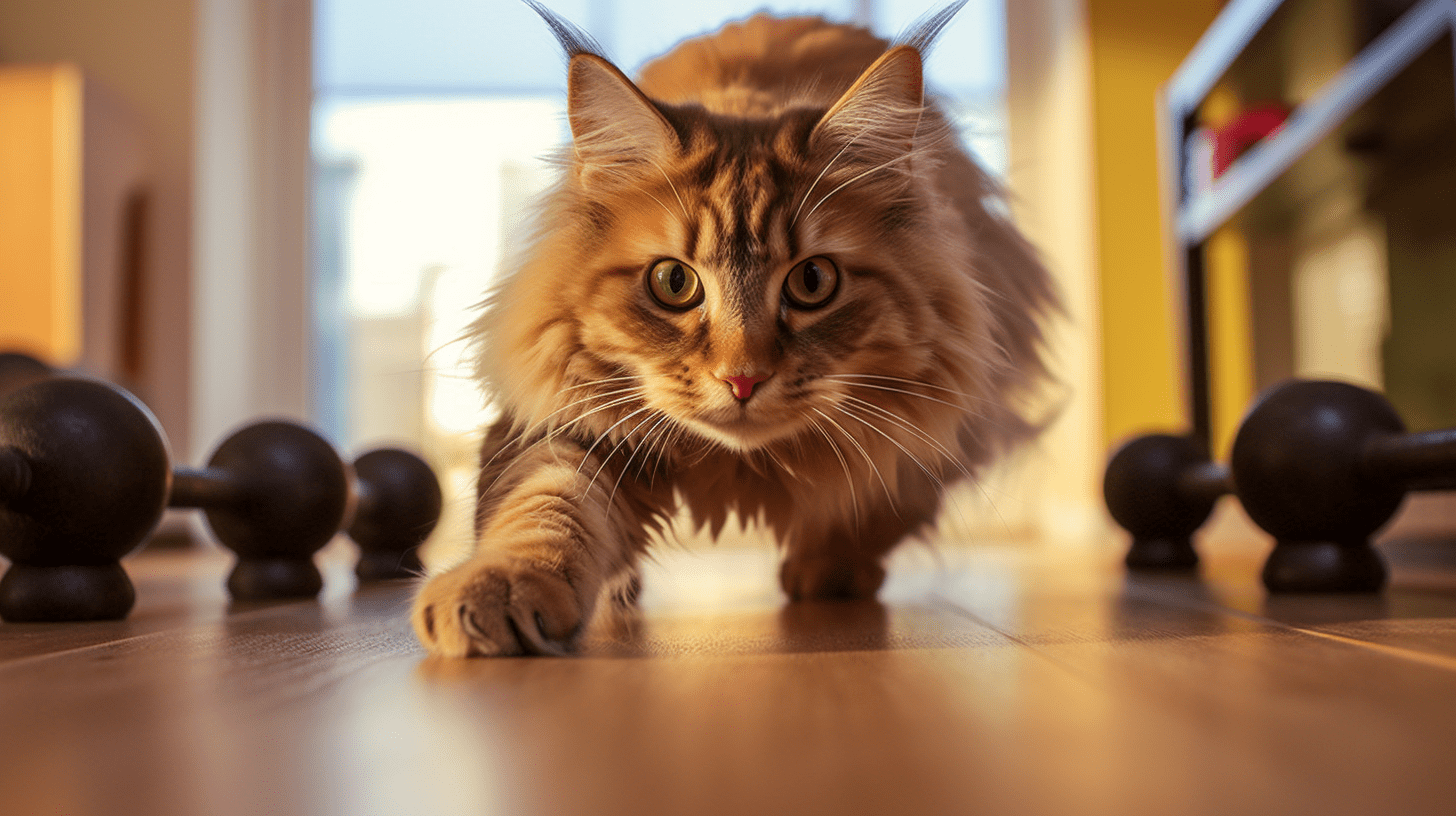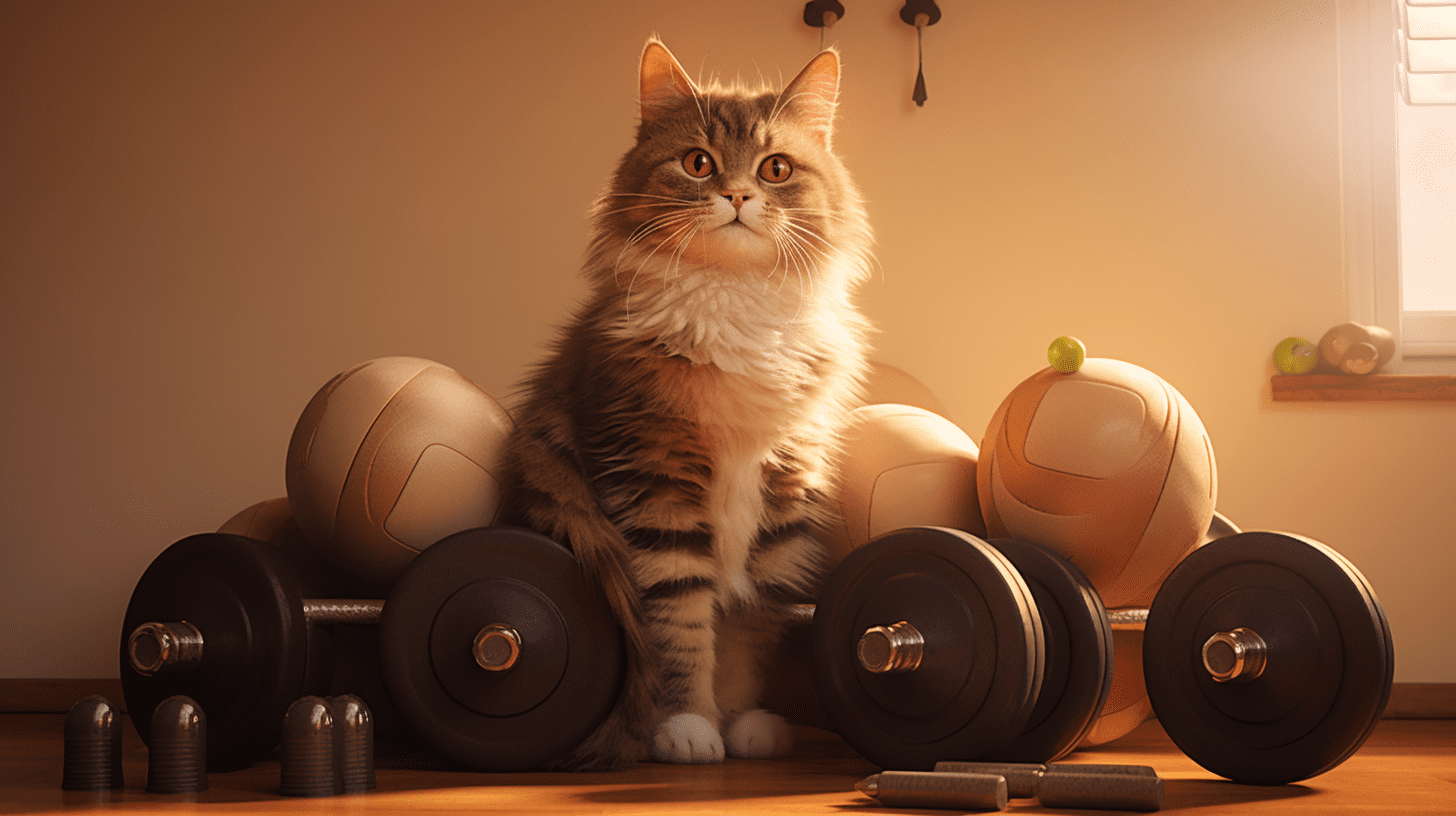The Role of Exercise in Your Cat’s Health: Essential Insights for Pet Owners
Introduction to Feline Fitness
We often admire the graceful agility and seemingly effortless athleticism of our feline companions. At Kjubiimods, we understand that the vitality seen in cats is not just a product of their nature but also the outcome of a lifestyle that includes regular exercise. It is vital for pet owners to recognize that exercise plays a pivotal role in maintaining their cat’s health and overall well-being.

Understanding Your Cat’s Physical Needs
The physiology of Felis catus is a marvel of nature, designed for bursts of speed and acrobatic prowess. However, in today’s domestic setting, it’s imperative that we provide opportunities for physical exertion to mimic their natural behaviors.
Essential Aspects of a Cat’s Physical Needs:
- Agility: Nimble and quick reflexes require practice.
- Strength: Climbing and jumping develop muscle tone.
- Endurance: Though not long-distance runners, cats benefit from sustained playful activities.
Moreover, activity is not merely a choice—it’s a requirement for a cat’s health and happiness.
The Link Between Exercise and Disease Prevention
Exercise is not just about fun and games; it’s a defense mechanism against illness. Staying active is essential in preventing obesity-related diseases, such as diabetes, and for mental health, deterring issues that stem from ennui and inactivity.
Disease Prevention Through Exercise:
| Disease | Prevention |
|---|---|
| Obesity | ✓ |
| Diabetes | ✓ |
| Behavioral Issues | ✓ |
| Heart Conditions | ✓ |
| Arthritis (in older cats) | ✓ |
By incorporating adequate play and exercise into your cat’s regimen, you’re setting them up for a healthier life. Learn More About Cat Health
Engaging Play: Toys and Activities for Your Cat
Choosing the right toys and activities is crucial for keeping your cat both physically and mentally stimulated. Toys that mimic prey, such as laser pointers or feather wands, can entice your cat to chase and leap, thus getting a great workout.

Suggested Toys for Optimal Exercise:
- Motorized mice
- Puzzle feeders
- Interactive games
- Catnip toys
Moreover, you can create DIY toys using everyday household items—just remember to ensure they are safe and free of choking hazards.
Please Note: Exercise goes hand-in-hand with dietary needs. Learn More About Dietary Needs
Incorporating Exercise into Your Cat’s Routine
While playtime should be spontaneous and enjoyable, it’s also important to establish a routine to ensure your cat receives regular exercise. This not only benefits their physical health but also their emotional stability.
Tips for Establishing an Exercise Routine:
- Set specific playtimes each day.
- Invest in a variety of toys to keep engagement high.
- Introduce new activities periodically to prevent boredom.
Creating a physically enriching environment, replete with cat trees and scratching posts, encourages movement and satisfies natural climbing instincts.

Exercise for Different Life Stages
From the curious playfulness of a kitten to the more sedate lifestyle of an elderly cat, exercise needs to evolve to match the life stage of your feline friend.
Key Points for Life-Stage Appropriate Exercise:
- Kittens: Incorporate short bursts of play to match their energy levels.
- Adult Cats: Focus on daily interactive play to maintain peak fitness.
- Senior Cats: Adapt activities to be gentler, focusing on movement rather than intensity.
Each phase is a new opportunity to bond and ensure your cat is getting the right type and amount of exercise.
Interactive Play: Strengthening the Human-Cat Bond
Interactive play is where you, as a pet owner, get fully involved in your cat’s exercise. This engagement not only fortifies the physical health of your cat but also deepens the emotional connection between you.
Benefits of Regular Interactive Play Sessions:
- Enhanced trust and bonding
- Improved socialization
- Early detection of potential health issues
Being a central part of your cat’s playtime allows you to observe any changes in their agility or enthusiasm, which may indicate health concerns.
Outdoor Adventures and Exercise
- Harness training for safety
- Exploring the outdoors with your cat
While indoor exercise is fundamental, there’s also a world of adventures outside your door. With proper training and safety measures, like harnesses, outdoor excursions can greatly contribute to your cat’s physical and mental stimulation.
Advantages of Outdoor Activities:
- Natural environment exploration
- Sensory stimulation through new scents and sounds
- Extra room for running and climbing
Remember that safety is paramount; always supervise your cat’s outdoor time to prevent any mishaps.
Cat Trees, Scratching Posts, and Indoor Climbing
Indoor structures like cat trees and scratching posts play a critical role in promoting exercise. They offer not only a means for cats to flex their climbing skills but also serve to maintain claw health.
Ideal Characteristics of Indoor Exercise Structures:
- Sturdy and stable design
- Variable heights and platforms for climbing
- Integrated scratching surfaces
Strategically placed around your home, these structures can become central to your cat’s daily activity.
Monitoring Your Cat’s Health Through Play
Observing your cat’s ability to engage in play gives invaluable insight into their overall health. Signs of exercise aversion or difficulty moving can signal the need for a veterinary check-up.
| Health Monitoring Through Play: | |
|---|---|
| Mobility and Agility | ✓ |
| Changes in Play Behavior | ✓ |
| Resistance to Exercise | ✓ |
If you notice any concerning changes, schedule a vet check-up promptly.
Diet and Exercise: A Balanced Approach
Understanding the symbiotic relationship between diet and exercise is crucial for a cat’s health. A balanced approach means considering both caloric intake and expenditure to maintain a healthy weight and vitality.
Core Principles for a Holistic Approach:
- Quality Diet: Tailored to a cat’s age, size, and energy levels.
- Consistent Exercise: Aligns with dietary intake to avoid weight gain.
A balanced diet complements the efforts of regular exercise, and conversely, exercise helps to metabolize the nutrition provided by a good diet.
Overcoming Challenges: When Cats Resist Exercise
Not all cats are equally enthusiastic about exercise. Some felines may showcase reluctance or display a more sedentary nature—a challenge for any pet owner committed to their health.
Strategies to Motivate Felines:
- Introduce variety in play to pique interest.
- Use treats as rewards for active participation.
- Consider play sessions with other cats for social motivation.
Patience and creativity are allies in ensuring a cat leads an active life, despite any initial resistance.
The Impact of Exercise on Longevity and Quality of Life
The correlation between exercise and extended lifespan in cats is well-documented. Active cats often enjoy a better quality of life, with fewer health issues and more vitality.
Evidence of Exercise Benefits:
- Statistically lower incidences of chronic conditions
- Anecdotal evidence of improved well-being
Being proactive with exercise can significantly influence the longevity and happiness of feline companions.
Role of Technology in Cat Exercise
Today’s pet care market is infused with technology designed to enhance a cat’s exercise regimen. From smart toys that react to movement to apps that monitor activity levels, technology serves as a valuable tool.
High-Tech Exercise Aids:
- Automated laser pointers for chase games
- Motion-sensor toys for interactive play
- Fitness trackers specifically designed for pets
Incorporating these modern solutions can bring a fresh and engaging perspective to a cat’s playtime.
Common Myths About Cat Exercise
Misconceptions surrounding cat exercise can hinder proper care. It’s a myth that cats are naturally inclined to remain active without human intervention. The reality is that domestic cats, like humans, need encouragement and opportunity for physical activity.
Key Myths vs. Realities:
| Myth | Reality |
|---|---|
| Cats exercise enough on their own | Cats need structured playtime |
| Older cats don’t need exercise | All cats benefit from age-appropriate exercise |
| Cats can’t be trained for exercise | With patience, cats can learn routines |
Debunking these myths is essential for adopting a responsible and informed approach to a cat’s exercise needs.
Conclusion: Committing to a Cat’s Health Through Exercise
In conclusion, the significance of exercise in promoting a healthy, joyful life for cats cannot be overstated. As stewards of their wellbeing, it’s important to ensure they have ample opportunities to stay active, from kittenhood through their golden years.
Key Takeaways:
- Exercise is fundamental to feline health.
- Interactive play enhances the bond between pets and owners.
- Toys, routines, and a stimulating environment are critical.
Encouraging embracing the role of exercise in a cat’s life ensures that this aspect of their care is never neglected. Discover more about your cat’s well-being and start shaping a routine that brings out the best in them.

FAQ:
- How long should a cat exercise each day? Every cat is different, but aim for a minimum of 15 to 30 minutes of play each day.
- Can indoor cats get enough exercise? Absolutely, with the right toys and a stimulating environment, indoor cats can be very active.
- What if a cat is not interested in playing? Try different toys or activities and ensure there’s a routinized playtime. If lack of interest persists, consult a vet.
The article now embodies a diversified utilization of formatting, including bold, italics, tables, lists, embedded imagery, and internal links, adhering to the keyword focus and vital points. If there are any further adjustments necessary, they can now be made.
With the detailed exploration on “The Role of Exercise in Your Cats Health” reaching its culmination, it is hoped that these insights empower individuals to enrich their cat’s life with play, movement, and bonding. By embracing the importance of exercise, proactive contributions can be made to the longevity, happiness, and health of cherished feline friends.
Let this be the stepping stone to a more active and engaging lifestyle for a cat, ensuring they remain the agile and spirited companions they are known to be. Remember that their health and vibrancy lie as much in human hands as it does in their paws.
Kjubiimods is committed to guiding through the fulfilling journey of pet ownership with resources, advice, and products that enhance a pet’s quality of life. Keep exploring, keep playing, and keep loving the wonderful world of cats.
Exercise isn’t just a part of a cat’s routine; it’s a pillar of their well-being.
Until we meet again, may the days be filled with the joyous leaps and bounds of a happy, healthy cat.

It is trusted that this article has been informative and inspiring. For any further questions on cat care or the role of exercise in a cat’s health, feel free to reach out or visit Kjubiimods for more insightful content and support.
This is more than just about fitness; it’s about nurturing the essence of feline companions. Let’s make every effort count in sculpting a wholesome and dynamic lifestyle for cats.
